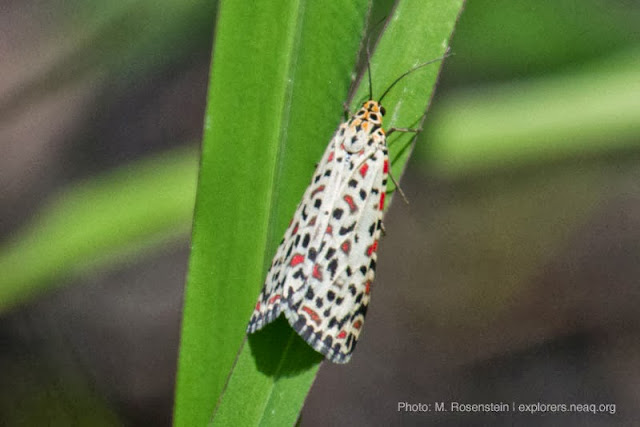Today's post and pictures about terestrial wanderings during the joint aquarium Fiji expedition comes from the Aquarium member Mark Rosenstein.
 |
| Common eggfly (Hypolimnas bolina) |
I arrived in Fiji two days early for this cruise. I like to do this to have time to adjust to the time zone, and to explore some of the country. I've been trying to become a more well rounded naturalist, expanding beyond reef creatures and birds to also study butterflies and odonates (dragonflies and damselflies) in the last year.
Like many Pacific islands, Fiji has only a small number of butterflies. About forty-some-odd have been recorded. A few long-distance migrants like monarchs (the same ones found in North America) and the rest Southeast Asian species which have accidentally ended up here. Some have been island bound long enough ago to evolve into unique, endemic species.
So shortly after checking in to our hotel, I walk to grounds, looking to see what birds and insects I can find. Alas, the birds are all the ones commonly found around human habitation in Fiji: common mynahs (Acridotheres tristis), jungle mynahs (Acridotheres fuscus) and red-vented bulbuls (Pycnonotus cafer). These are all introduced species which have adapted well to living around people. There are some butterflies on the grounds. They have flowering bushes planed around the edges of the property, and bougainvillea flowering above the walkways.
 |
| A as-yet-unidentified butterfly with camouflaged underside with a few eyespots |
The first butterfly I see is one I recognize from my last trip: the common eggfly (Hypolimnas bolina). Eggflies are a family of butterflies common in Asia, but not found in North America. In the next two days I see two other species of eggfly as well. Alas, my hardcover field guide for butterflies of the South Pacific was too much for my luggage, so proper identifications will have to wait until I am home.
Common the grounds was a very small grey/blue butterfly, feeding primarily on the tiny flowers of the grass. It looks a lot like the spring azure from home, so I suspect is another species of azure of the genus Celastrina.
 |
| A relative of the common buckeye (Junonia coenia)? |
On our second day we rented a car and drove the southern coast of Viti Levu. We spent a couple of hours hiking in Sigatoka Sand Dunes National Park. Here I found a number of butterflies and moths. One large butterfly had a camouflaged underside with a few eyespots. Another is very similar to the common buckeye of North America and is almost certainly in the same genus, as those are found worldwide. In the tall grass we saw many moths which seemed just gray until taking a close look to see an attractive pattern of black and red spots.
 |
| An unidentified moth with red and black spots |
In my two and a half days on land before boarding the dive boat, I photographed eight species of butterfly, all but one lifers. Alas I only saw two dragonflies, and those were in flight, without good enough looks to even begin to identify them.
Stay tuned to this blog to follow the team as they dive to collect data on the health of the coral reefs, pick up trash where they find it, check in with the villagers to see how some conservation initiatives are faring and further develop connections with the people that live on these beautiful Pacific islands.



Finally with access to my butterfly field guide, I now know what I saw. Hypolimnas bolina is more commonly known as the Blue Moon butterfly. The one with a leaf-shaped camouflaged underside is the Pacific Orange Leafwing, Doleschallia tongana. The buckeye look-alike is a Meadow Argus, Junonia villida.
ReplyDeletehttp://en.wikipedia.org/wiki/Utetheisa_lotrix I believe this is the unknown moth. I just spent an hour trying to find out what moth I had a picture of and yours came up in my search. Figured You might like to know what the moth's species is. :)
ReplyDelete